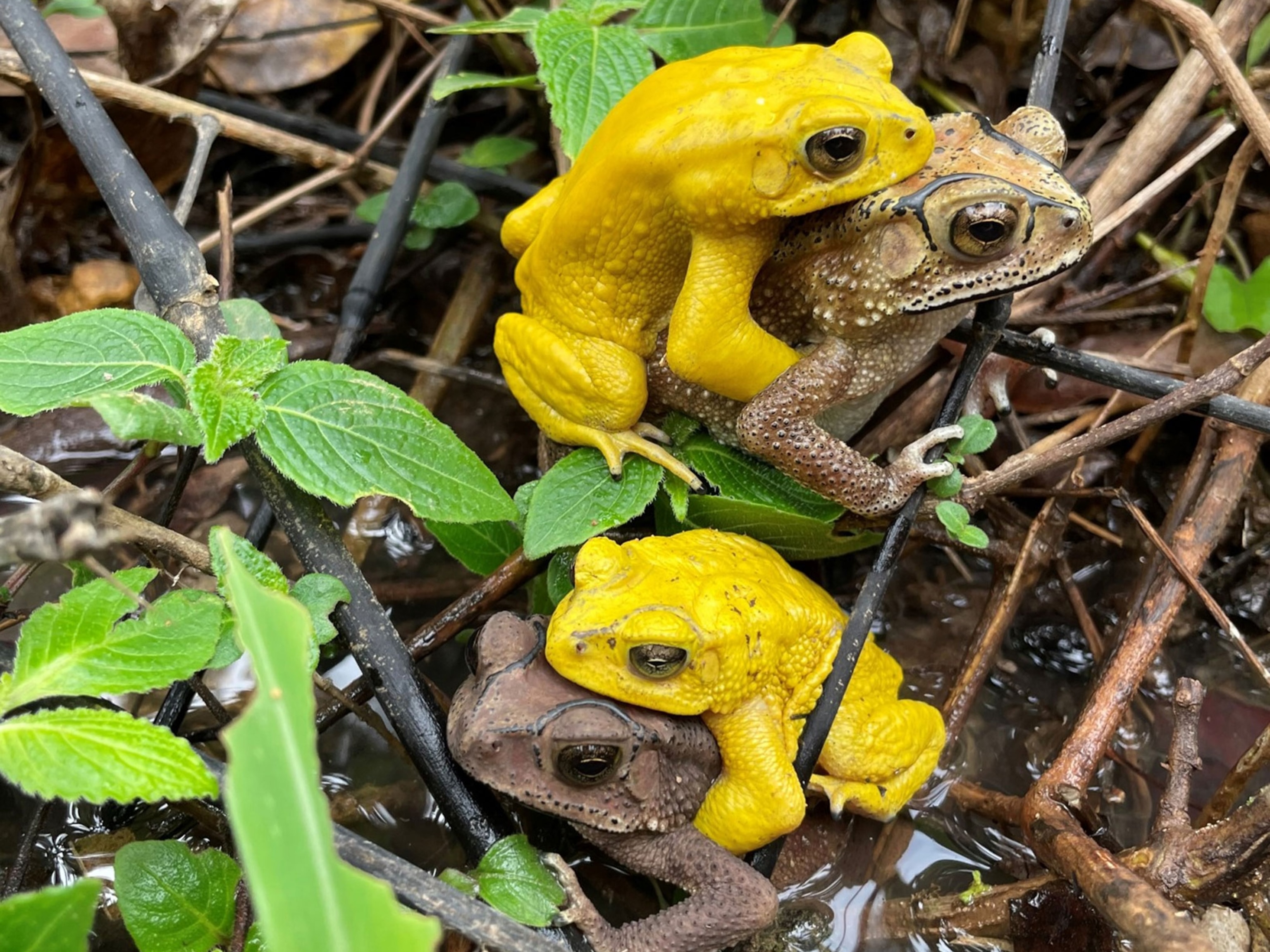
"Lost" Long-Fingered Frog Found in Africa
"Beautiful little animal" rediscovered after 62 years, scientists say.
In a handy stroke of luck, scientists have rediscovered a "lost" African species: the Bururi long-fingered frog.
Last seen in 1949, the 1.3-inch-long (3.2-centimeter-long) amphibian was found during a December 2011 biodiversity survey in the small central African country of Burundi, scientists announced in March.
Thwarted by decades of political conflict, few biologists have so far been able to explore Burundi's ecosystems.
"The last time this species was seen was the first time this species was seen—that's the state of our knowledge in this little corner of Africa," said team member David Blackburn, a herpetologist at the California Academy of Sciences in San Francisco.
During the recent survey, scientists collected one male specimen of the frog, which—like all male Bururi long-fingered frogs—has an elongated "ring" finger on each hand.
"It's one of the few bluish frogs in Africa—a beautiful little animal," Blackburn added.
(See related pictures: "Ten Most Wanted 'Extinct' Amphibians.")
Finding Frog a "Great Moment"
In addition to Blackburn, the recent biodiversity expedition included scientists from the University of Texas at El Paso, the Center for Research in Natural Science in the Democratic Republic of the Congo, and the National Institute for the Environment and Conservation of Nature in Burundi.
The frog's original discoverer, a Belgian biologist, did not describe exactly where in Burundi he'd found the animal, so Blackburn and colleagues were "shooting in the dark" when they began their search for the frog.
Blackburn figured that frogs of the same genus in Cameroon—the closest relatives of the Bururi frogs—would have similar mating calls, so he kept his ear attuned for those sounds.
Sure enough, the researcher located the right sounds in a thickly forested area.
"I happened to take my stick and push aside some vegetation, and lo and behold, sitting on the log was this species that hadn't been seen since 1949," Blackburn said.
"It was a great moment."
(See pictures of a see-through frog and other "lost" species found in the Congo.)
"Lost" Frog's Forests Under Threat?
Little is known about the long-fingered frog's biology or its numbers, Blackburn noted. For instance, the exact purpose of the animal's namesake digits remains a mystery.
What's more, he said, a growing human population is moving into the Burundi mountains, where people often eat wildlife and cut down large swaths of forests for firewood.





